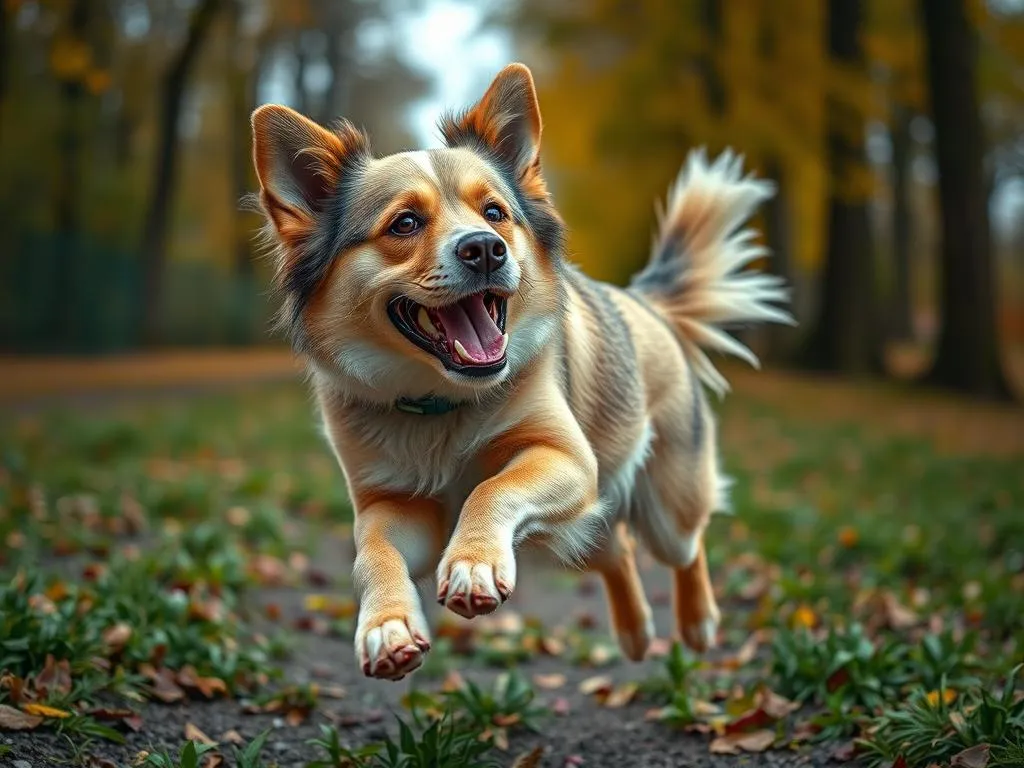
Introduction
Dog parkour is an exciting and innovative way to engage your canine companion in physical and mental activities. It involves navigating through various obstacles in the environment, allowing dogs to showcase their agility and intelligence in a playful manner. The concept has its roots in human parkour, where practitioners use their bodies to overcome obstacles in urban settings. By incorporating elements of parkour into your dog’s exercise routine, you can significantly enhance their quality of life.
Understanding the importance of physical and mental stimulation for dogs is crucial. Dogs are naturally energetic and curious animals, and without proper outlets for their energy, they may develop behavioral issues. This article will delve into the world of dog parkour, outlining its benefits, training techniques, and how to get started with this exciting activity.
Understanding Dog Parkour
What is Dog Parkour?
Dog parkour is essentially an adventurous training method that encourages dogs to navigate their surroundings, overcoming various obstacles. This can include jumping over benches, climbing on rocks, or weaving through trees. The beauty of dog parkour lies in its adaptability; it can be practiced in urban settings, parks, or even backyards, making it accessible for all dog owners.
Unlike traditional dog training, which often focuses on obedience and commands, dog parkour emphasizes exploration and problem-solving. It provides dogs with the opportunity to think critically, as they must assess their environment and determine the best way to navigate obstacles. This makes it a fun and engaging alternative to routine training sessions.
History of Dog Parkour
The concept of dog parkour evolved from the human practice of parkour, which focuses on efficient movement through complex environments. As dog lovers sought new ways to engage their pets physically and mentally, the idea of incorporating parkour elements into dog training emerged. This practice has gained popularity over the years, inspired by agility training but with a more freestyle approach that allows for creativity and exploration.
Benefits of Dog Parkour
Physical Benefits
One of the most significant advantages of dog parkour is its ability to improve your dog’s physical fitness. Engaging in parkour helps enhance muscle tone, increases flexibility, and builds overall strength. As dogs navigate obstacles, they use various muscle groups, promoting better coordination and balance.
Additionally, regular parkour sessions can help combat obesity and encourage a healthier lifestyle. With obesity rates in pets on the rise, activities like dog parkour can play a crucial role in maintaining a healthy weight.
Mental Stimulation
Dogs require mental stimulation just as much as physical exercise. Dog parkour challenges their cognitive abilities, enhancing problem-solving skills and focus. When dogs encounter new obstacles, they must think critically about how to approach them, which keeps their minds sharp and engaged.
Moreover, participating in parkour can help reduce boredom and destructive behaviors often observed in under-stimulated dogs. By providing an outlet for their energy and curiosity, you create a more balanced and content pet.
Bonding Experience
Engaging in dog parkour also fosters a deeper bond between dog and owner. As you work together to navigate obstacles, you encourage teamwork and communication. This shared experience can strengthen your relationship, leading to a more obedient and well-adjusted dog.
Getting Started with Dog Parkour
Assessing Your Dog’s Readiness
Before diving into dog parkour, it’s essential to assess your dog’s readiness. Consider their physical condition, age, and temperament. Some breeds may be more suited for parkour than others, so understanding your dog’s capabilities is crucial. For instance, high-energy breeds like Border Collies or Jack Russell Terriers might excel in parkour, while older dogs or those with mobility issues may require a gentler approach.
Essential Equipment
To get started with dog parkour, you’ll need some essential equipment. A comfortable harness and a sturdy leash are crucial for safety and control during training sessions. Additionally, consider investing in a clicker for positive reinforcement and treats to reward your dog for their efforts.
Choosing safe and appropriate surfaces for practice is also vital. Look for areas with grass, dirt, or flat surfaces to minimize the risk of injury. Avoid practicing on slippery or uneven ground, which could pose hazards for your dog.
Basic Skills to Teach
Begin with foundational commands such as sit, stay, and jump. These basic skills will serve as the building blocks for more complex parkour maneuvers. Start with simple obstacles, gradually increasing the difficulty as your dog becomes more comfortable.
For example, you might begin by encouraging your dog to jump over a low log, then progress to climbing onto a bench or navigating through a series of cones. The key is to keep training sessions fun and engaging, ensuring that your dog remains excited about the activity.
Training Techniques for Dog Parkour
Positive Reinforcement
Using positive reinforcement is essential in dog parkour training. Reward your dog with treats, praise, or playtime whenever they successfully navigate an obstacle. This helps build their confidence and encourages them to take on new challenges.
Be patient and consistent with your training. If your dog struggles with a particular maneuver, break it down into smaller steps, allowing them to master each component before moving on to the next.
Setting Up Parkour Courses
Creating a safe and engaging parkour course can enhance your dog’s training experience. Look for natural and man-made obstacles in your environment, such as logs, benches, or stairs. You can set up a course with varying difficulty levels, allowing your dog to progress at their own pace.
Consider incorporating a variety of obstacles, such as tunnels, jumps, and balance beams, to keep things interesting. Change the layout frequently to maintain your dog’s enthusiasm and curiosity.
Safety Tips
Safety should always be a top priority when practicing dog parkour. Recognize and mitigate risks by supervising your dog closely during training sessions. Ensure they are warmed up before engaging in physical activities to prevent injuries.
Keep an eye out for signs of fatigue or discomfort, and don’t hesitate to take breaks as needed. If your dog shows fear or hesitation toward certain obstacles, take a step back and work on building their confidence before reintroducing the challenge.
Advanced Dog Parkour Skills
Challenging Obstacles
Once your dog has mastered the basics of dog parkour, you can introduce more complex maneuvers. Examples include vaults, climbs, and jumps over higher objects. Gradually increase the difficulty of the obstacles to keep your dog engaged and challenged.
When introducing advanced skills, ensure your dog is physically capable and mentally prepared. Take your time, and celebrate their achievements, no matter how small.
Incorporating Agility Training
Agility training can complement dog parkour and enhance your dog’s overall skill set. While agility focuses on navigating a set course with specific obstacles, parkour allows for more freedom and creativity in movement.
Both disciplines share similarities, such as promoting physical fitness and mental stimulation, making them excellent companions in a dog’s training routine. By integrating elements of agility training into your parkour sessions, you can create a well-rounded experience for your dog.
Competitions and Events
As your dog becomes more proficient in dog parkour, you may want to explore competitions and events. These gatherings provide a fantastic opportunity to showcase your dog’s skills and connect with other parkour enthusiasts.
Preparation for events typically involves refining your training techniques and ensuring your dog is comfortable with various obstacles. Participating in competitions can also be a great motivator for both you and your dog.
Community and Resources
Finding Local Dog Parkour Groups
Connecting with other dog parkour enthusiasts can enhance your experience and provide valuable support. Look for local dog parkour groups or clubs that host training sessions and events. These communities often share tips, resources, and encouragement, making it easier to stay motivated.
Engaging with like-minded individuals can also inspire new training ideas and foster friendships between both dogs and their owners.
Online Resources and Tutorials
The internet offers a wealth of resources for those interested in dog parkour. Consider seeking out online tutorials, videos, and social media groups dedicated to this exciting activity. These platforms can provide insight into training techniques, obstacle ideas, and success stories from fellow dog owners.
Professional Trainers
If you’re unsure where to start or feel overwhelmed by training on your own, consider seeking the guidance of a professional dog trainer. Look for trainers with experience in dog parkour or related disciplines, as they can offer personalized instruction and support.
Investing in ongoing education and training can enhance your dog’s skills and ensure a positive experience for both you and your furry friend.
Conclusion
Incorporating dog parkour into your dog’s routine can significantly enhance their physical fitness, mental stimulation, and overall well-being. By engaging in this fun and dynamic activity, you create opportunities for bonding and teamwork, making it a rewarding experience for both you and your pet.
As you embark on this exciting journey, remember to be patient, celebrate progress, and most importantly, have fun! Dog parkour is not just about training; it’s about creating memories and building a stronger relationship with your furry companion.
FAQs
Is dog parkour suitable for all breeds?
Yes, dog parkour can be adapted for dogs of all breeds and sizes. However, it’s essential to assess your dog’s physical limitations and temperament before starting.
How often should I practice parkour with my dog?
Aim for short, frequent training sessions, ideally a few times a week. Consistency is key to building skills and confidence.
What do I do if my dog is afraid of certain obstacles?
If your dog shows fear, take a step back. Use positive reinforcement to encourage them and introduce obstacles gradually, allowing them to build confidence at their own pace.









